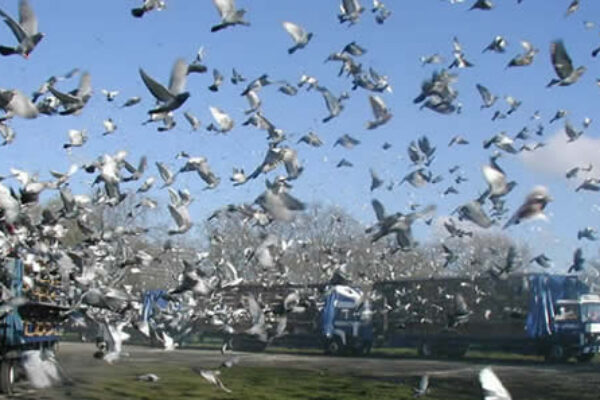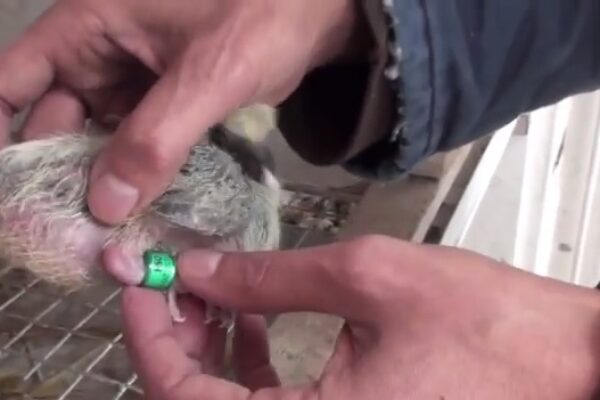Training Your Birds
 After the birds have been outside for a proper amount of time, they should be called into the loft. This is done by whistling and shaking the feed can. Just as a lion tamer uses a whip to train his lions, so you must use your feed to train your pigeons. When your pigeons are hungry, they quickly enter the loft. The ones that are late should not be given any food. This sounds cruel, but you can bet your last dollar they will be first tomorrow. If you plan to let your birds out twice a day, give them 1/3 of their ration in the morning. They will still be hungry enough to come into the loft when you exercise them again in the late afternoon. When you call them into the loft after the afternoon exercise, give them the other 2/3 of their daily ration. When the first few birds go to drink, you never allow any food to remain out. They must clean it all up. If they don not, take the remaining food and save it for tomorrow. Then, make sure that you cut back tomorrow’s ration a little bit. Remember, you want them hungry. You certainly do not want to starve them, but giving them all the food they want is just as bad. When you feed too much, you lose your whip. When you lose your whip, you lose control of your birds.
After the birds have been outside for a proper amount of time, they should be called into the loft. This is done by whistling and shaking the feed can. Just as a lion tamer uses a whip to train his lions, so you must use your feed to train your pigeons. When your pigeons are hungry, they quickly enter the loft. The ones that are late should not be given any food. This sounds cruel, but you can bet your last dollar they will be first tomorrow. If you plan to let your birds out twice a day, give them 1/3 of their ration in the morning. They will still be hungry enough to come into the loft when you exercise them again in the late afternoon. When you call them into the loft after the afternoon exercise, give them the other 2/3 of their daily ration. When the first few birds go to drink, you never allow any food to remain out. They must clean it all up. If they don not, take the remaining food and save it for tomorrow. Then, make sure that you cut back tomorrow’s ration a little bit. Remember, you want them hungry. You certainly do not want to starve them, but giving them all the food they want is just as bad. When you feed too much, you lose your whip. When you lose your whip, you lose control of your birds.
Be as consistent as you can. Always try to feed them and exercise them at the same time of day. Have a good routine, and follow it every day.
Neighborhood Manners
After several weeks, your birds will be flying for minutes at a time. Once they know where home is and how to enter the loft, you must teach them the other ground rules. They should only sit on your property. It is best if they only sit on your loft. If they sit on your neighbors house or telephone wires, get them off of them. Throw a tennis ball or anything else suitable. They will soon catch on to the idea that someone else’s property is off limits.









Useful info thanks. I have a question,, what’s the pertiqular reason for losing homing ability???
very good info
very good imformation in the beginners handbook thankyou
i really like this handbook